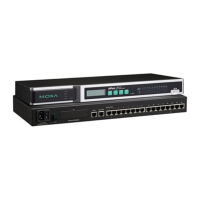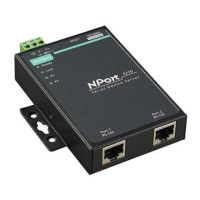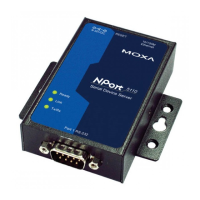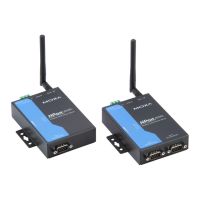Max connection (default=1): This field is used if you need to receive data from different hosts simultaneously.
When set to 1, only a single host may open the TCP connection to the serial port. When set to 2 or greater, up
to the specified number of hosts may open this port at the same time. When multiple hosts establish a TCP
connection to the serial port at the same time, the CN2600 will duplicate the serial data and transmit it to all
the hosts. Ethernet data is sent on a first-in first-out basis to the serial port when data comes into the CN2600
from the Ethernet interface.
Ignore jammed IP (default=No): This option determines how the port will proceed if multiple hosts are
connected and one or more of the hosts stops responding as the port is transmitting data. If you select No, the
port will wait until the data has been transmitted successfully to all hosts before transmitting the next group of
data. If you select Yes, the port will ignore the host that stopped responding and continue data transmission
to the other hosts.
Allow driver control (default=No): This option determines how the port will proceed if driver control
commands are received from multiple hosts that are connected to the port. If No is selected, driver control
commands will be ignored. If Yes is selected, control commands will be accepted, with the most recent
command received taking precedence.
TCP port (default=4001): This is the TCP port number assignment for the serial port on the CN2600. It is the
port number that the serial port uses to listen to connections, and that other devices must use to contact the
serial port. To avoid conflicts with well known TCP ports, the default is set to 4001.
Command port (default=966): The Command port is the TCP port for listening to SSDK commands from the
host. In order to prevent a TCP port conflict with other applications, the user can set the Command port to
another port if needed.
Packet length (default=0): The Packet length setting refers to the maximum amount of data that is allowed
to accumulate in the serial port buffer before sending. At the default of 0 for packet length, no maximum
amount is specified and data in the buffer will be sent as specified by the delimiter settings or when the buffer
is full. When a packet length between 1 and 1024 bytes is specified, data in the buffer will be sent as soon it
reaches the specified length.
Delimiter 1 and Delimiter 2 (default=None): When Delimiter 1 is enabled, the serial port will clear the buffer
and send the data to the Ethernet port when a specific character, entered in hex format, is received. A second
delimiter character may be enabled and specified in the Delimiter 2 field, so that both characters act as the
delimiter to indicate when data should be sent.
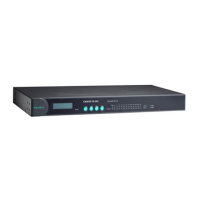
